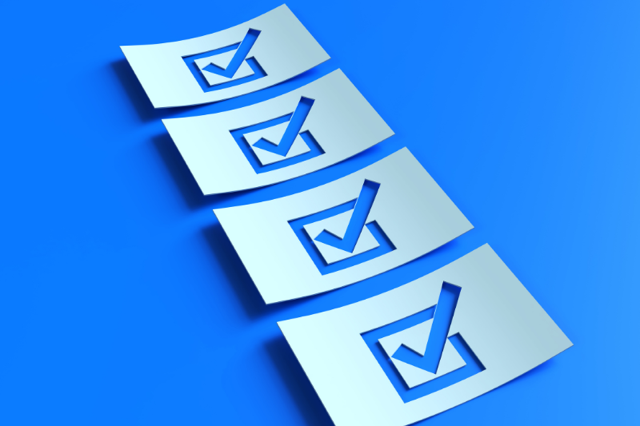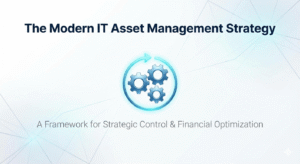Schedule your Windows 11 Upgrade Assessment Today!
Windows 10 End of Life: Why Upgrading to Windows 11 is Essential
As Windows 10 approaches its End of Life, businesses face critical decisions about system security, software compatibility, and productivity. The upgrade to Windows 11 is more than a simple update—it’s a strategic move to protect your business from security threats, boost operational efficiency, and prepare for the future. This guide will help you navigate the transition, from assessing your current infrastructure to securing your data, with expert support from a Microsoft Certified Solutions Partner.
Windows 10 to Windows 11 Upgrade Checklist
Upgrading your systems doesn’t have to be complicated. By following this checklist, you can make the transition to Windows 11 smoothly, minimizing risks and maximizing productivity with each step. Let’s dive in!
1. Assess Your Current Infrastructure
Before upgrading, take a close look at your current setup. This helps you plan effectively and prioritize the upgrade of key systems.
- Inventory Devices: Start by making a list of all devices still running Windows 10.
- Check System Requirements: Confirm that each device meets Windows 11’s hardware requirements to avoid compatibility issues.
- Identify Critical Systems: Prioritize upgrading devices that handle sensitive data or are essential to daily operations.
Pro Tip: Collaborate with a Microsoft Certified Solutions Partner to evaluate your infrastructure and ensure each device is ready for Windows 11.
2. Ensure Software Compatibility
The last thing you want is to upgrade only to find that your business-critical software is incompatible. Running a software compatibility check helps prevent disruptions.
- Run Compatibility Tests: Check essential applications to ensure they work seamlessly on Windows 11.
- Update Line of Business Software: Ensure critical applications are updated to their latest versions to avoid potential issues.
- Partner Assistance: A certified partner can help validate software compatibility and recommend any necessary updates.
3. Plan for Data Backup and Recovery
Data security is vital, especially during a system upgrade. Protect your data by implementing a solid backup and recovery plan.
- Back Up Important Data: Save essential files and configurations to prevent data loss during the upgrade.
- Create a Recovery Plan: Ensure quick data restoration if needed.
- Certified Partner Support: Work with a certified partner to manage data backup and recovery, ensuring no critical data is left behind.
4. Establish a Security Baseline
With security threats constantly evolving, upgrading to Windows 11 provides a robust foundation of security features that Windows 10 no longer supports.
- Review Security Policies: Update policies to reflect new system security standards.
- Implement Microsoft Security Features: Enable Windows 11’s hardware-based encryption and threat detection features to keep your systems safe.
- Consult a Certified Partner for Security: A certified partner can help configure security settings to maximize protection and meet industry compliance requirements.
5. Develop an Upgrade Timeline
A structured, phased rollout ensures a smooth upgrade process and minimizes business disruptions.
- Create a Phased Rollout Plan: Schedule upgrades by device priority and user needs.
- Communicate with Your Team: Inform employees about the upgrade process and offer support resources.
- Certified Partner Engagement: Collaborate with a certified partner to create an efficient timeline and receive guidance on scheduling and technical support.
6. Test and Optimize Post-Upgrade
Once the upgrade is complete, testing is essential to confirm everything is working as expected.
- System Testing: Test upgraded systems for stability, performance, and compatibility.
- Monitor Productivity Tools: Check that tools and applications are functioning efficiently post-upgrade.
- Continuous Support from a Partner: Keep a certified partner on standby for any ongoing support, troubleshooting, and performance optimization.
Why Partner with a Microsoft Certified Solutions Partner?
Upgrading from Windows 10 to Windows 11 is an opportunity to improve your business’s security, efficiency, and overall technology experience. Partnering with a Microsoft Certified Solutions Partner provides added support, expertise, and peace of mind.
Benefits of Working with a Certified Partner:
- Enhanced Security: Certified partners configure Windows 11’s advanced security features, ensuring your systems stay protected.
- Improved Productivity: With expert setup, compatibility issues are minimized, allowing your team to work without interruptions.
- Streamlined Transition: Professional planning and device preparation lead to a smooth, risk-free upgrade, reducing downtime and disruptions.
Ready to Make the Transition? Schedule Your Windows 11 Assessment Today!With Windows 10’s End of Life approaching, the time to upgrade is now. Ensure a secure, productive, and efficient transition by working with a Microsoft Certified Solutions Partner. Click below to schedule your Windows 11 upgrade assessment.





